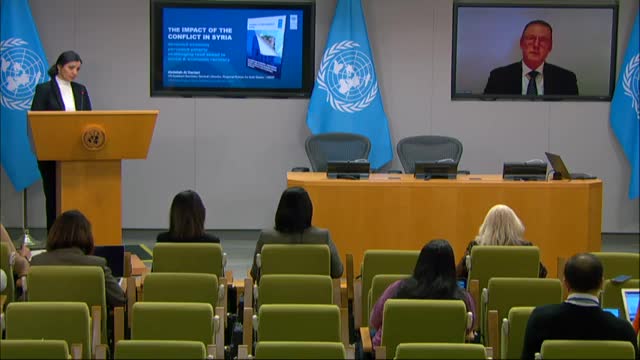Syria's Energy Production Drops 80% Amid Ongoing Conflict and Infrastructure Damage
February 22, 2025 | United Nations, Federal
This article was created by AI summarizing key points discussed. AI makes mistakes, so for full details and context, please refer to the video of the full meeting. Please report any errors so we can fix them. Report an error »

In a recent United Nations press conference, officials discussed the severe socioeconomic impact of 14 years of conflict in Syria, highlighting the dramatic decline in energy production and the challenges facing recovery efforts. The meeting underscored the urgent need for strategic planning to address the extensive damage to the country's infrastructure.
One of the most alarming statistics shared was that energy production in Syria has plummeted by 80%, with over 70% of power plants and civilian infrastructure severely affected. The centralized nature of Syria's energy grid, which relied on a few key power plants, has exacerbated the situation. For instance, the Aleppo power plant has lost 1,000 megawatts out of its original 9,000 megawatt capacity, while other facilities along the coast are either partially destroyed or non-operational due to a lack of natural gas supply.
The discussion also touched on the uneven impact of the conflict across different regions, raising concerns about how varying control by different groups has led to disparities in damage and recovery potential. This regional variation complicates the path to rebuilding, as some areas may require more time and resources to recover than others.
Officials emphasized that achieving recovery will necessitate a sustained annual growth rate of 5% over the next 15 years. However, given the current circumstances, there are doubts about how realistic this goal is. The ongoing conflict in Northeast Syria continues to hinder economic growth, with officials noting that the situation remains fluid and challenging.
In conclusion, the meeting highlighted the critical state of Syria's energy infrastructure and the broader socioeconomic implications of the prolonged conflict. As the country grapples with these challenges, the need for coordinated recovery efforts and international support remains paramount. The discussions set the stage for future dialogues on rebuilding and addressing the ongoing humanitarian crisis in Syria.
One of the most alarming statistics shared was that energy production in Syria has plummeted by 80%, with over 70% of power plants and civilian infrastructure severely affected. The centralized nature of Syria's energy grid, which relied on a few key power plants, has exacerbated the situation. For instance, the Aleppo power plant has lost 1,000 megawatts out of its original 9,000 megawatt capacity, while other facilities along the coast are either partially destroyed or non-operational due to a lack of natural gas supply.
The discussion also touched on the uneven impact of the conflict across different regions, raising concerns about how varying control by different groups has led to disparities in damage and recovery potential. This regional variation complicates the path to rebuilding, as some areas may require more time and resources to recover than others.
Officials emphasized that achieving recovery will necessitate a sustained annual growth rate of 5% over the next 15 years. However, given the current circumstances, there are doubts about how realistic this goal is. The ongoing conflict in Northeast Syria continues to hinder economic growth, with officials noting that the situation remains fluid and challenging.
In conclusion, the meeting highlighted the critical state of Syria's energy infrastructure and the broader socioeconomic implications of the prolonged conflict. As the country grapples with these challenges, the need for coordinated recovery efforts and international support remains paramount. The discussions set the stage for future dialogues on rebuilding and addressing the ongoing humanitarian crisis in Syria.
View full meeting
This article is based on a recent meeting—watch the full video and explore the complete transcript for deeper insights into the discussion.
View full meeting